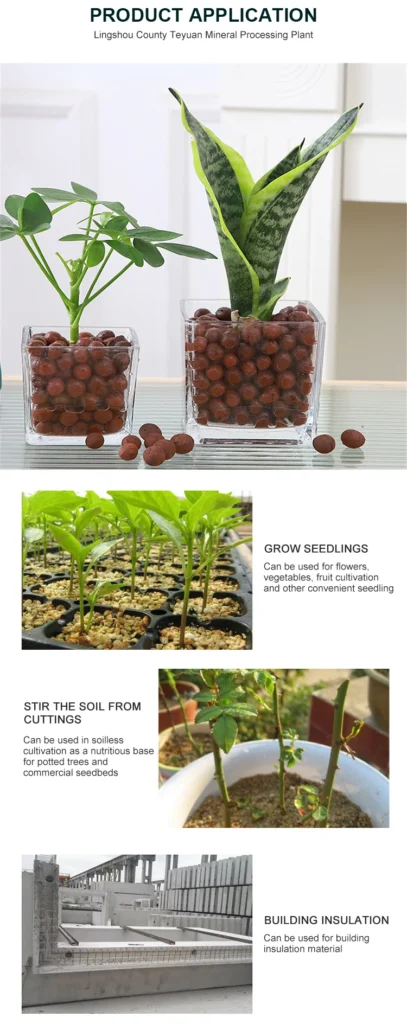In the captivating world of terrarium landscaping, clay balls have emerged as a versatile and essential element. These small spheres are revolutionizing the way enthusiasts create and maintain their mini – ecosystems.
Physical Attributes of Clay Balls
Clay balls are typically made from natural clay, fired to form durable and lightweight spheres. Their smooth texture and uniform shape add an aesthetically pleasing aspect to terrariums. They come in various sizes, from small, pebble – like balls perfect for delicate terrarium setups to larger ones for more substantial arrangements. A recent terrarium exhibition featured many displays that utilized different – sized clay balls to create unique visual effects.
Drainage and Moisture Management
One of the primary functions of clay balls in terrariums is to improve drainage. They prevent waterlogging by allowing excess water to flow through their porous structure. In a terrarium study, it was found that plants in setups with clay balls had healthier roots due to better drainage. They also play a role in moisture retention, slowly releasing water as the environment dries out, ensuring a consistent humidity level for the plants.
Aeration for Root Health
The porosity of clay balls promotes excellent air circulation around the roots of plants in the terrarium. Adequate oxygen supply is crucial for root respiration. In a greenhouse terrarium experiment, plants grown with clay balls showed enhanced root growth compared to those without. This air circulation also helps prevent the growth of harmful fungi and bacteria that thrive in anaerobic conditions.

Aesthetic Appeal in Landscaping
Clay balls can be used to create stunning visual effects in terrariums. They can be layered to mimic natural landscapes, such as riverbeds or mountain slopes. For example, in a desert – themed terrarium, lighter – colored clay balls can represent sand dunes. Their earthy colors blend well with other terrarium elements like moss, rocks, and plants, enhancing the overall aesthetic appeal.
Compatibility with Different Terrarium Plants
Clay balls are highly compatible with a wide range of terrarium plants. Whether it’s tropical plants like ferns and orchids, or succulents and cacti, they can support the growth of these plants. A community terrarium project in New York successfully grew a diverse collection of plants using clay balls as part of the growing medium.
Creating Different Layers in Terrariums
In terrarium construction, clay balls can be used to create multiple layers. A bottom layer of larger clay balls can serve as a drainage layer, while a top layer of smaller, more decorative clay balls can enhance the appearance. This layering technique not only improves the functionality of the terrarium but also adds depth and dimension to the landscape.
Maintenance and Longevity
Maintaining clay balls in a terrarium is relatively easy. They do not decompose quickly, providing long – term stability. However, they may need occasional rinsing to remove any accumulated salts or debris. In some cases, if the terrarium environment becomes too humid, the clay balls can be dried out slightly to maintain the right balance.
Versatility in Terrarium Styles
From closed – top terrariums that create a self – sustaining ecosystem to open – top ones that are more exposed, clay balls can be used effectively. In a closed – top terrarium, they help regulate moisture and air circulation, while in an open – top terrarium, they add a natural – looking element to the landscape.
Cost – effectiveness and Accessibility
Clay balls are generally cost – effective, especially when compared to some specialized terrarium materials. They are widely available at garden centers and online stores. A hobbyist in California found that using clay balls in her terrarium projects was a budget – friendly option without sacrificing quality or aesthetics.
Environmental Friendliness
Made from natural clay, clay balls are an environmentally friendly choice for terrarium landscaping. Their production has a relatively low environmental impact, and they can be reused in different terrarium setups. A study on sustainable terrarium materials highlighted the eco – friendliness of clay balls.
In conclusion, clay balls offer a plethora of benefits for terrarium landscaping. Their combination of functionality, aesthetics, and affordability makes them a top choice for both novice and experienced terrarium enthusiasts.

